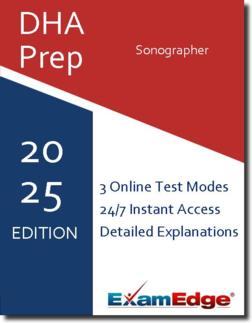DHA Sonographer (DHA-SO) Practice Tests & Test Prep - Topics
Based on 25 Reviews
- Real Exam Simulation: Timed questions and matching content build comfort for your DHA Sonographer test day.
- Instant, 24/7 Access: Web-based DHA Sonographer practice exams with no software needed.
- Clear Explanations: Step-by-step answers and explanations for your DHA exam to strengthen understanding.
- Boosted Confidence: Reduces anxiety and improves test-taking skills to ace your DHA Sonographer (DHA-SO).

Understanding the exact breakdown of the DHA Sonographer test will help you know what to expect and how to most effectively prepare. The DHA Sonographer has multiple-choice questions The exam will be broken down into the sections below:
| DHA Sonographer Exam Blueprint | ||
|---|---|---|
| Domain Name | % | Number of Questions |
| Patient Care | 8% | 6 |
| Physical Principles of Ultrasound | 32% | 22 |
| Abdominal Procedures | 21% | 15 |
| Obstetrical and Gynecological Procedures | 30% | 21 |
| Superficial Structures and Other Sonographic Procedures | 9% | 6 |


